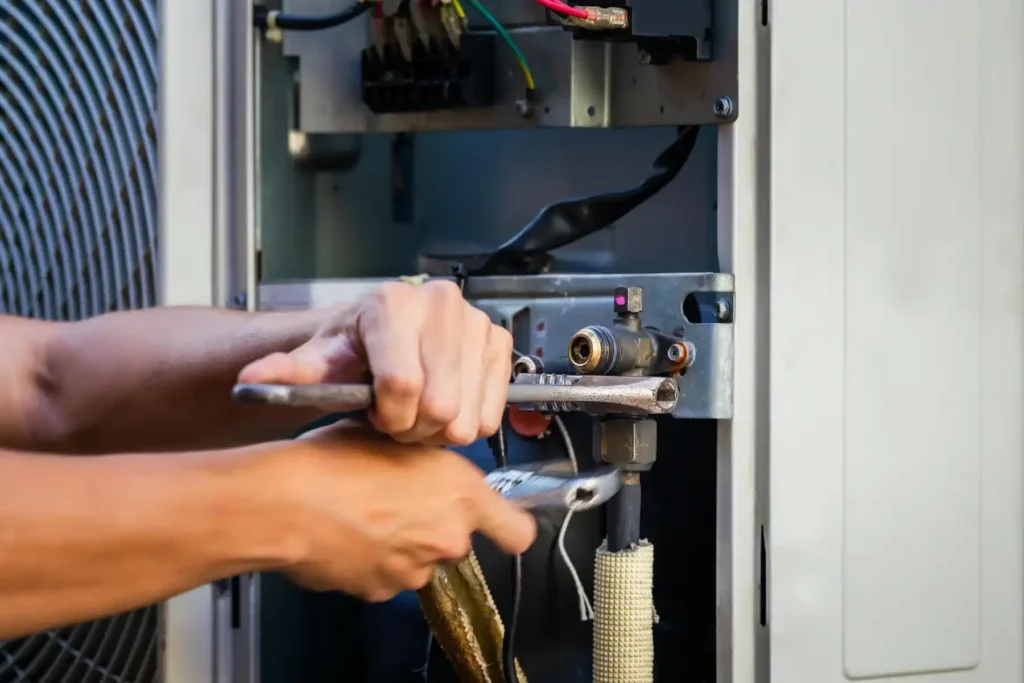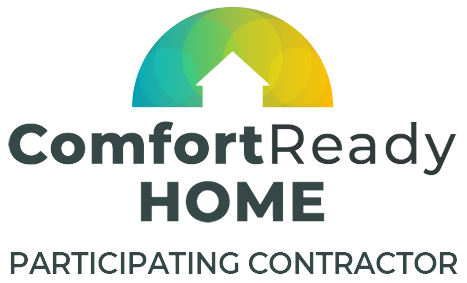Take Control of Your Home’s Air Quality Today—Call for Options


When Ellie closed on her home—a 1960s rambler tucked into a suburban cul-de-sac—she was equal parts thrilled and overwhelmed. It had hardwood floors, a fireplace, and just enough quirk to feel like it had a soul. But after the first few weeks of living there, something started to feel… off.
Every morning, she’d wake up with a dry throat and cracked lips. Her skin felt tight no matter how much lotion she used, and her dog, Moose, had started sneezing more than usual. At first, she blamed it on the winter air, but it didn’t make sense. The furnace was new, the insulation was good—so why did it feel like she was living in a desert?
One night, wrapped in a fleece blanket and nursing a nosebleed, she Googled: “Why is the air in my house so dry?” Answer: Low humidity. Common in homes with forced-air heat, especially in colder months.
She bought a little plug-in humidifier for the bedroom. It helped. Kind of. But she hated the constant refilling and the vague smell it sometimes gave off. Plus, it did nothing for the rest of the house.
After a chat with Fast HVAC, she learned that a best whole-home humidifier could be installed directly into her furnace system. It would quietly maintain the ideal humidity level across the entire house—no maintenance, no daily refills, no more waking up feeling like she’d swallowed sand.
She hesitated at first—it was more expensive than the $50 tabletop one she’d bought on impulse—but the idea of turning her new house into a true home sealed the deal.
The difference was subtle but powerful. The wood floors stopped creaking like they were begging for water. Moose stopped sneezing. Ellie slept deeper and woke up without that dry, scratchy feeling. Even her indoor plants, which had been clinging to life, perked up like they were finally breathing.
Dry air in a home can sneak up on you, but there are definitely some telltale signs. Here’s a list of the most common ones:
Dry, itchy skin, Chapped lips, Scratchy throat or dry cough, Bloody or irritated noses, Sinus headaches or congestion, Waking up feeling dehydrated or uncomfortable, Increased static electricity (getting zapped when touching things)
Creaky or warped hardwood floors, Cracks in wood furniture, molding, or instruments, Paint or wallpaper peeling at the edges, Gaps forming between floorboards, Doors sticking or frames shifting
Houseplants drying out quickly or developing brown leaf tips, Pets sneezing or scratching more often
A hygrometer (cheap little device you can find online or at a hardware store) will tell you your indoor humidity. Ideal range: 30%–50%, Below 30% = too dry
At Fast HVAC, we understand that comfort goes beyond temperature—it’s also about the quality of the air you breathe. That’s why we offer professional installation of whole-home humidifiers designed to maintain healthy humidity levels throughout your house in King County, all year long. Unlike portable units that only treat a single room, our integrated systems work with your existing HVAC setup to deliver balanced moisture to every corner of your home. The result? Fewer dry skin issues, reduced static electricity, better sleep, and protection for your wood floors, furniture, and even your musical instruments.
Our experienced technicians will help you choose the right humidifier in King and Snohomish Counties based on your home’s size, layout, and your personal needs. Whether you’re battling dry air in the winter or simply want to create a more comfortable living environment, we’ll ensure a smooth installation and provide maintenance support to keep your system running efficiently. With Fast HVAC, you’re not just getting equipment—you’re getting peace of mind and a healthier home.




Selecting the right best whole-home humidifier installation isn’t one-size-fits-all. Fast HVAC technicians look at several key factors to make sure the system matches the home’s needs and works efficiently with the existing setup. Here’s a breakdown of what they consider:
He humidifier needs to be powerful enough to cover the entire living space. A small unit won’t keep up in a large home, and an oversized one can over-humidify, which can lead to mold or condensation issues.
Some humidifiers work better with certain types of heating systems. For example, bypass humidifiers use the furnace humidifier installation airflow and need ductwork access. Fan-powered humidifiers have their own fan and are great for tighter spaces. Finally, steam humidifiers are more advanced and efficient, ideal for larger homes or if you want precise control.
If the home is in a region with long, dry winters (like the northern U.S. or mountain areas), a higher-capacity system might be recommended. Mild climates might do just fine with a smaller, less complex model.
Technicians inspect the existing ductwork layout to determine where and how a humidifier can be installed. Limited space might rule out certain models.
Things like desired humidity levels, energy efficiency, maintenance needs, and even budget come into play. Some homeowners prefer low-maintenance systems with automatic humidity sensors, while others might be okay with manual controls.
Once they assess all of that, they’ll recommend a model that strikes the right balance between performance, cost, and ease of upkeep.
We are authorized dealers and installers of the most common and trusted humidification systems.







We understand you have options when it comes to selecting best air purifier and humidifier vendor, which means we need to work extra hard to earn your business. We’re consumers and homeowners too, so we aim to provide the same value we’d expect if we were shopping for our own home. Here’s why Fast Heating & Air should be your first choice for air purified installation in the King and Snohomish Counties:
We treat your home with the utmost care, ensuring no dings, scratches, or mess during installation.
Your confidence in us is our top priority, and we take that responsibility seriously.

A whole-house humidifier is a system that adds moisture to the air throughout your entire home. It’s installed directly into your HVAC system and automatically regulates humidity levels, helping maintain a comfortable and healthy indoor environment.
Portable humidifiers only affect a single room and need regular refilling and cleaning. Whole-house humidifiers treat your entire home automatically and work with your heating system, providing consistent humidity with minimal maintenance.
A whole-house humidifier can reduce dry skin, static electricity, sinus irritation, and dry throat. It also helps protect wood flooring, furniture, and musical instruments from cracking due to dry air.
Signs of dry air include dry or itchy skin, frequent nosebleeds, static shocks, wilting houseplants, and creaky wood floors. A hygrometer can also measure your indoor humidity—below 30% usually means it’s too dry.
In most cases, no. In fact, adding humidity in winter can make your home feel warmer at lower temperatures, which may let you lower the thermostat and save on heating costs.
Minimal. Most systems just need a quick checkup during your annual HVAC maintenance. Some models may require a filter or water panel replacement once or twice a year.
Most homes with forced-air heating systems can support a whole-house humidifier. A licensed HVAC technician will assess your ductwork and space to recommend the right fit.
Typically, installation takes 2–4 hours, depending on your home’s HVAC setup. We aim to complete the work with minimal disruption to your daily routine.
Yes, balanced humidity can ease symptoms by preventing dry airways and reducing dust and airborne irritants. Many allergy sufferers notice significant relief with proper humidity control.
The ideal indoor humidity level is between 30% and 50%. This range is comfortable for people and safe for your home’s structure, furniture, and electronics.
Yes, though many systems are most beneficial in winter. In summer, your air conditioning may naturally manage humidity. Some advanced models adjust seasonally based on your home’s needs.
Yes, we work with major brands like Trane, Rheem, Carrier, Lennox, and others. We’ll match your humidifier to your specific HVAC system to ensure compatibility and efficiency.
Too much humidity can lead to mold and condensation issues. That’s why most systems come with a humidistat to monitor and automatically adjust moisture levels, keeping your air balanced.
Our family-owned business has proudly served homeowners in the King and Snohomish Counties since 1982. We are active members of the community: We drive in the same frustrating traffic, we support the local community, and we all enjoy the same recreational opportunities together.
No matter the current humidity inside your house, or your reaction to it, our certified technicians are ready to assist. We understand how poor air quality effects health, so we provide thoughtful solutions to your family’s circumstances.



Let’s bring your vision to life with expert craftsmanship and thoughtful design.
16120 Woodinville Redmond Rd NE STE. 15
Woodinville, WA 98072
(206) 558 5112
hello@fastwaterheater.com
Monday – Friday 7:30am-5pm
24/7 Emergency Service Available
HVAC License
NORDSHA772L2
Electrical License
NORDSHA774MR





